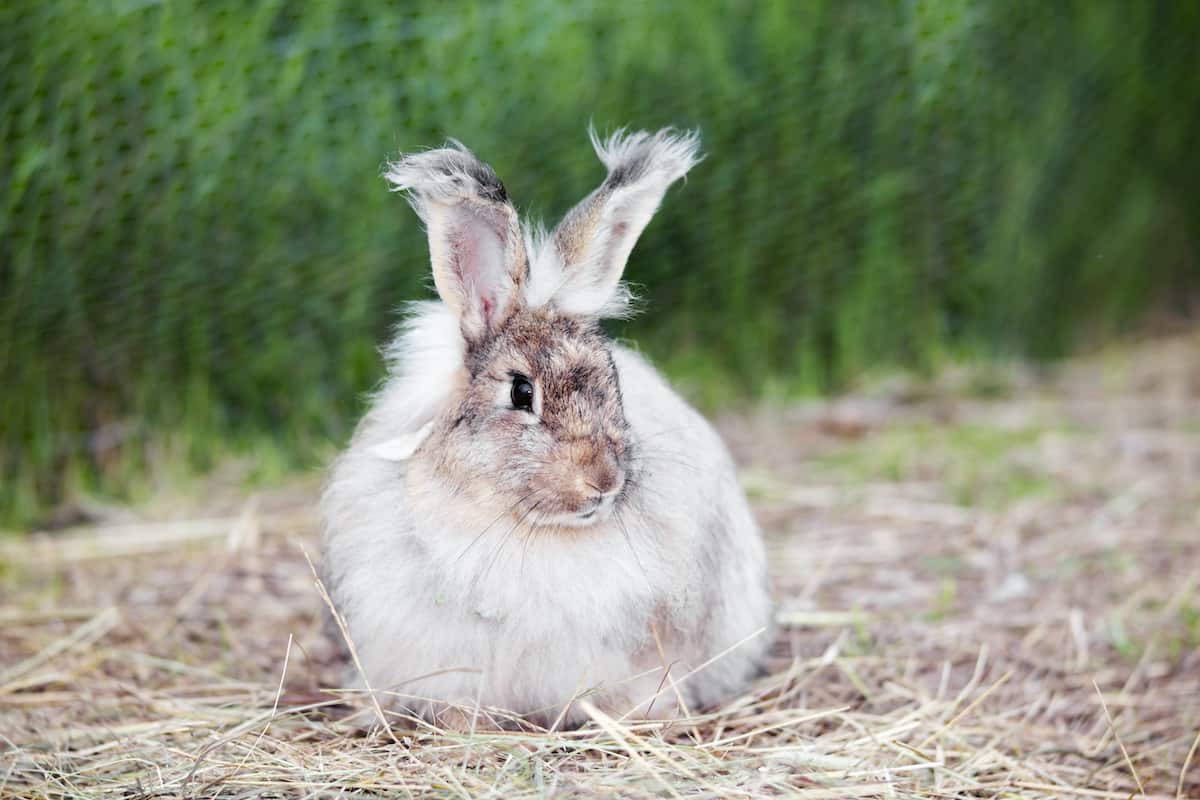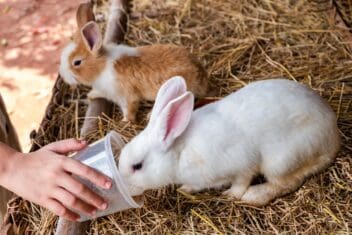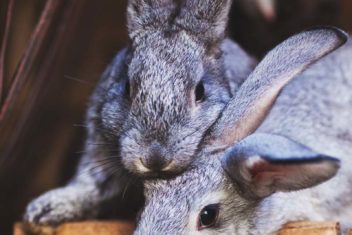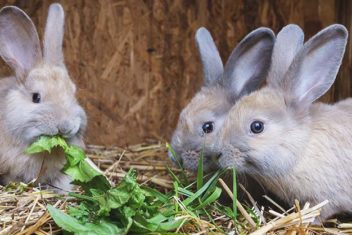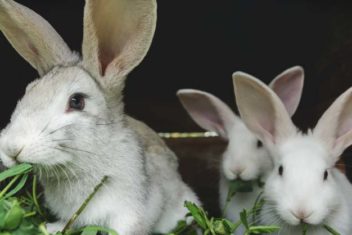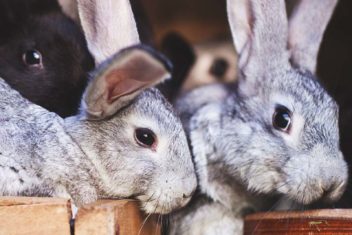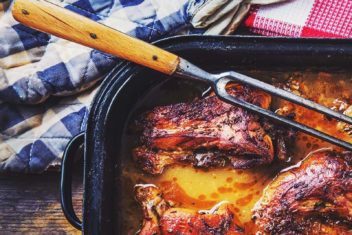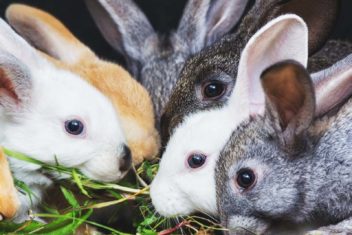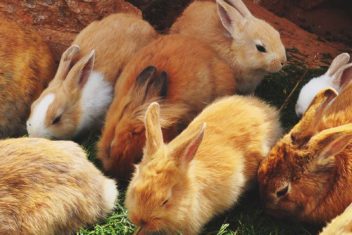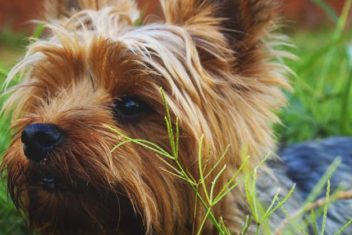If you’re interested in producing your own fiber on your farm, whether you plan to use it for spinning or you want to sell it, there’s no better way to do it than to raise your own fiber rabbits.
Rabbits are cuddly, soft, and easy to raise. They are so small that they are easier to manage than other fiber animals, like sheep or alpacas. Plus, they mature quickly, meaning you won’t have to wait long before you have plenty of fiber to spin.
Here are some tips on raising rabbits for fiber – as well as some of the best breeds you can raise.
Choosing Fiber Rabbit Breeds
Most of the time, people raise Angora rabbits for fiber. What many people don’t realize, though, is that “Angora” is a general term used to describe several kinds of breeds. Also, Angoras aren’t the only rabbits you can raise for fiber. Here are some of the most popular fiber rabbit breeds.
1. English Angora
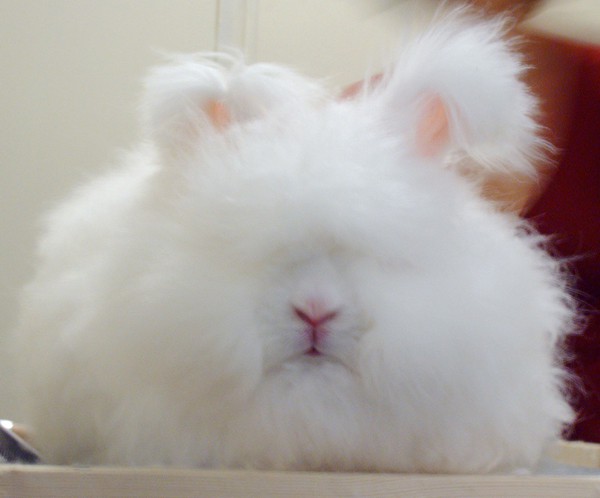
English Angoras are the smallest out of all the angora rabbit breeds. Nonetheless, they are incredibly productive. At only 5 to 6 pounds, these bundles of fuzz produce a ton of wool for their size.
On average, you’ll get up to 1-pound of angora fiber per year from just one rabbit. They produce fiber on every inch of their body, including their feet, face, and ears.
This heavy wool growth is absolutely adorable to behold – but also quite tricky to maintain. You’ll have to pluck or brush your rabbit every few months, as the wool sheds.
2. Satin Angora
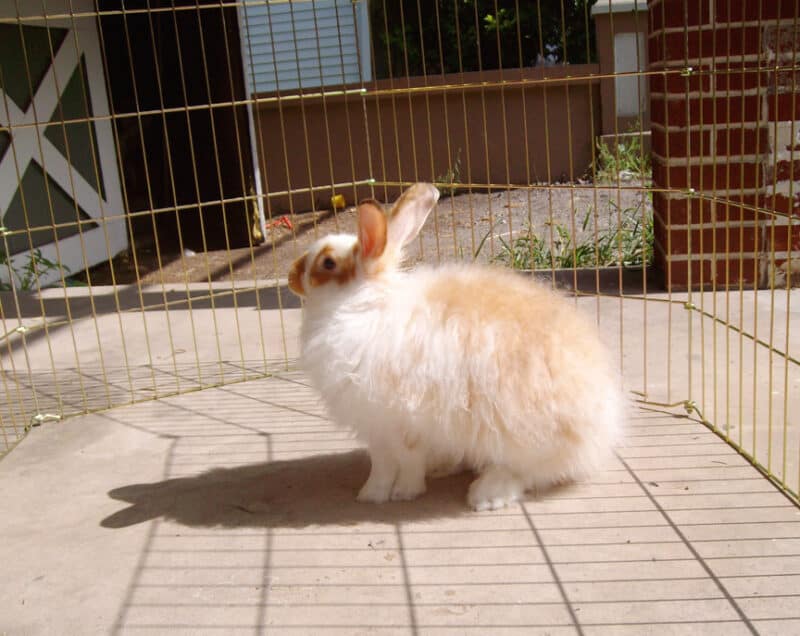
Satin Angoras are some of the most highly sought-after fiber rabbit breeds. Their wool is known for being easy to spin. It also has a gorgeous color and a luxurious feel.
Unfortunately, you won’t get quite as much fiber from these rabbits. They only produce about 8-ounces of fiber a year.
3. French Angora
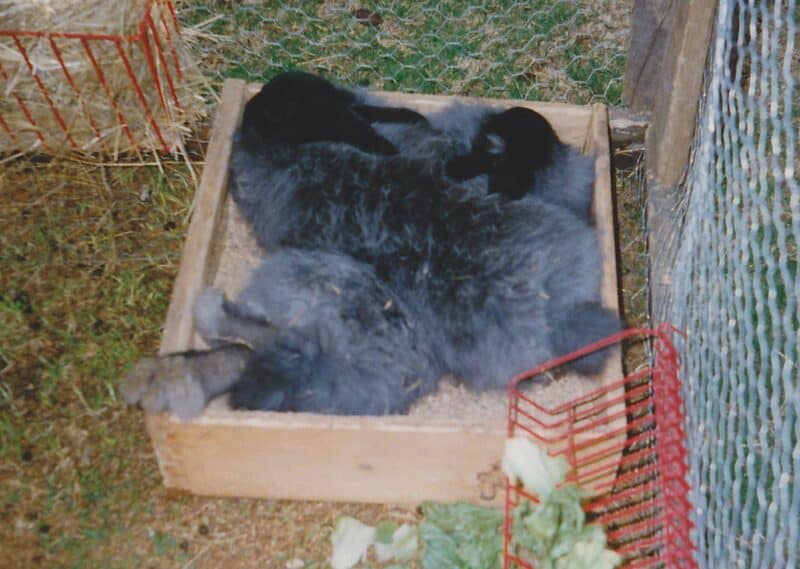
French Angoras require less maintenance than English Angoras, as they have shorter hair. They are somewhat bigger than English Angoras. However, since they don’t produce quite as much fiber per pound, you’ll still only end up yielding about a pound of fiber each year.
French Angora rabbits also shed their coats naturally. You can harvest the wool by brushing instead of clipping. They have more guard hairs than English Angoras, too. This means that their wool is less likely to matt. French Angoras also have the most intense pigments in these guard hairs, so the color of their wool can be quite attractive.
4. German Angora
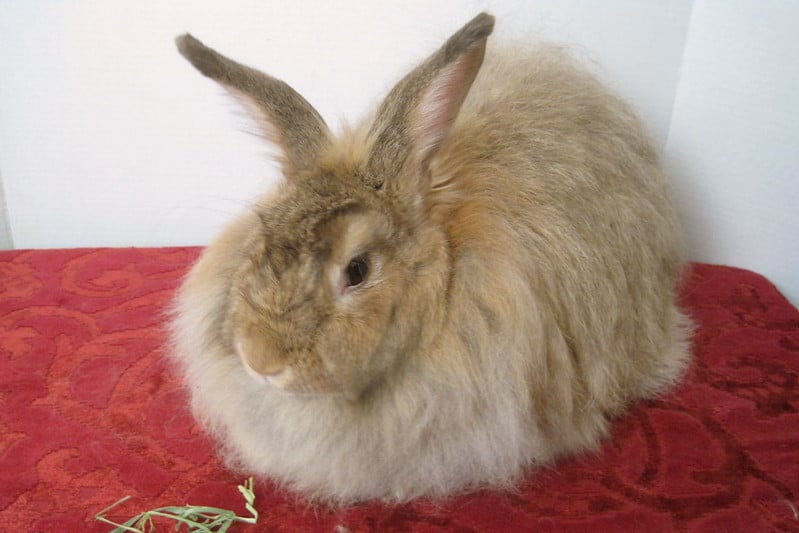
German Angoras are large rabbits, with most tipping the scales at around 10 to 11 pounds. They are almost twice as large as English Angoras and therefore, can produce twice as much wool.
The downside to German Angoras is that they do not naturally shed and must be clipped every 90 days – year-round – to keep them healthy and the fiber in good shape.
5. Giant Angora
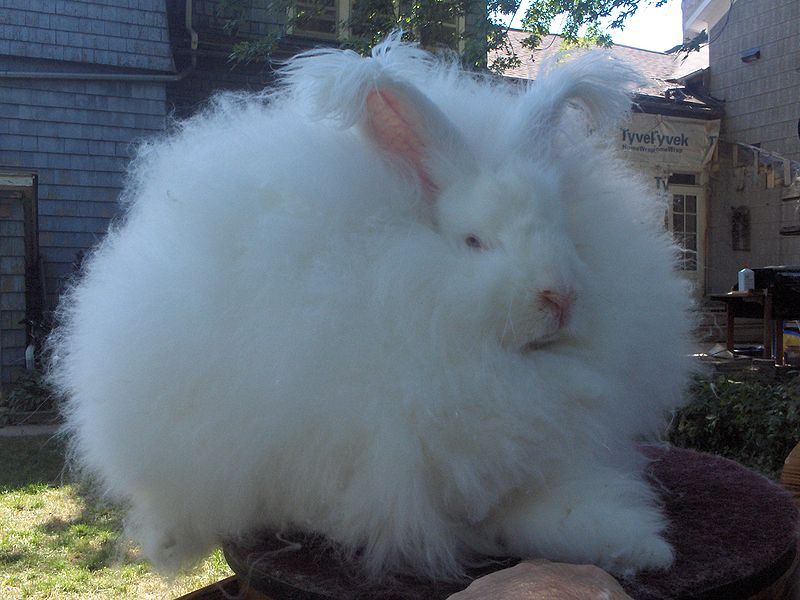
The Giant Angora, as you might expect by the name alone, is another large rabbit breed. These breeds can grow up to 12 pounds each and have many of the same characteristics as the German Angora.
Like German Angoras, Giant Angoras need to be sheared or clipped. They cannot be brushed to maintain or harvest their wool.
6. American Fuzzy Lop

If you don’t want to raise Angora rabbits, you might want to consider the American Fuzzy Lop. This rabbit is a wool breed that is similar in appearance to the Holland Lop.
It has shorter wool than a commercial Angora and is also quite a bit smaller. The fur is somewhat coarse and thick. Most American Fuzzy Lops weigh in at around 4 pounds.
7. Jersey Wooly
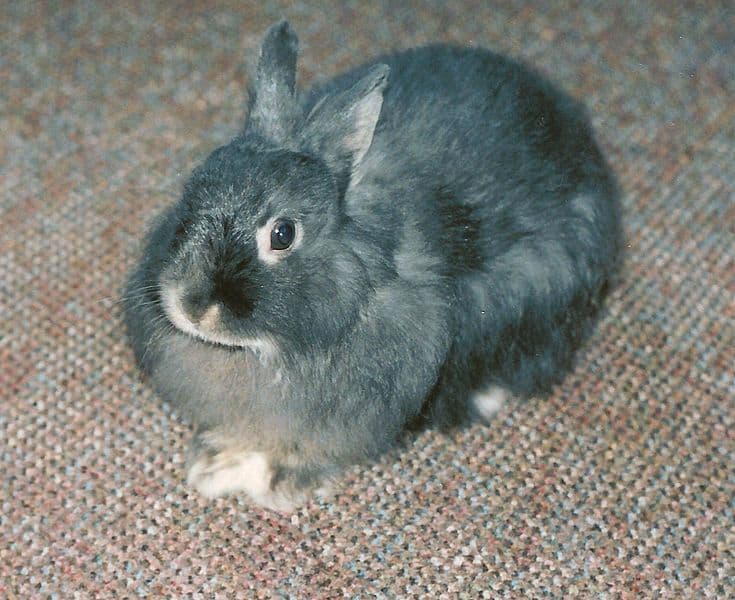
Jersey Wooly rabbits are also quite small, usually only weighing between 1 and 3 pounds. These fiber rabbits aren’t super economical to raise because of their size. They are considered “dwarf” rabbits, in fact. These rabbits are best suited to being raised as pets – the fiber will be a side benefit.
Raising and Taking Care of Fiber Rabbits
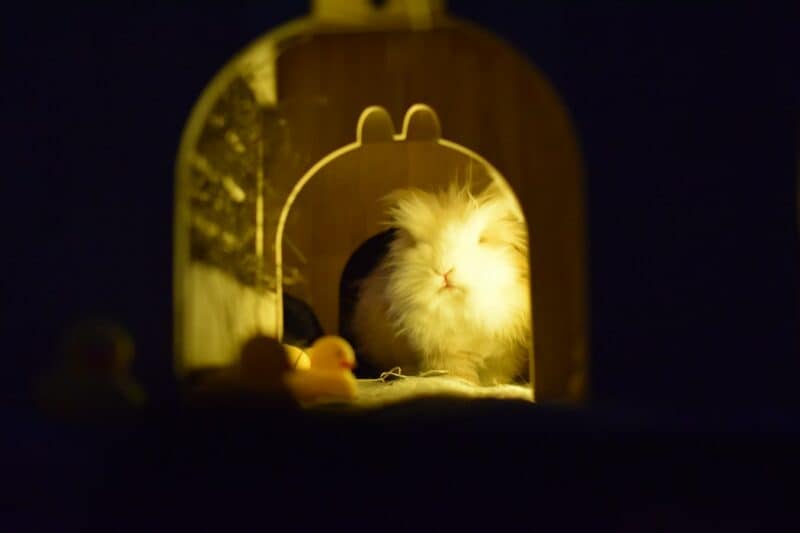
As with raising any other type of rabbit, you’ll need to take care of your rabbits properly so they can live a happy and healthy life.
Ear mites, one of the most common health issues for fiber rabbits, and most other health issues can be avoided by proper hygiene. Clean your rabbit hutches weekly – or even more often, if necessary. You’ll know that your rabbit is suffering from mites if he/she has ears that look scabbed over. You can use oil in the infected ear to help clear up these mites.
Rabbits diseases is a long topic to cover, so if you want to learn more about preventing and taking care of the most common rabbit health problems, go ahead to its own separate guide.
1. Housing Fiber Rabbits
Fiber rabbits tend to be a bit more sensitive to excessively hot and cold temperatures. Most rabbits can survive in a hutch that is kept in an unheated shed – or even outside – during cold weather. That’s not the case for Angora rabbits.
If you plan on keeping fiber rabbits during the winter, you will need to bring them inside.
Plus, some fiber rabbits are prone to sunburn. You will need to provide your rabbits with shade during the hottest months. Keep in mind that, even when the shade is provided, some rabbits may still choose to stay in the sun, and sunburn can have dire consequences for Angora rabbits.
Because of these concerns, a lot of people choose to raise fiber rabbits indoors year-round, either in a barn or in the house.
Fiber rabbits do best in wire cages, ideally raised individually. Fur tends to mat when put into direct contact with bedding.
Raising them alone is essential because if a buck is constantly coming into contact with a doe, their fur will become matted from trying to bite onto their backs for mating.
Be careful about what kind of bedding you use for your fiber rabbits. Bedding can easily stick to a fiber rabbit’s coat, causing difficult mats. Don’t use shredded pine or cedar shavings as bedding. Instead, use bedding like a newspaper to help control odor without damaging your fiber rabbit’s wool.
2. Feeding and Watering Fiber Rabbits
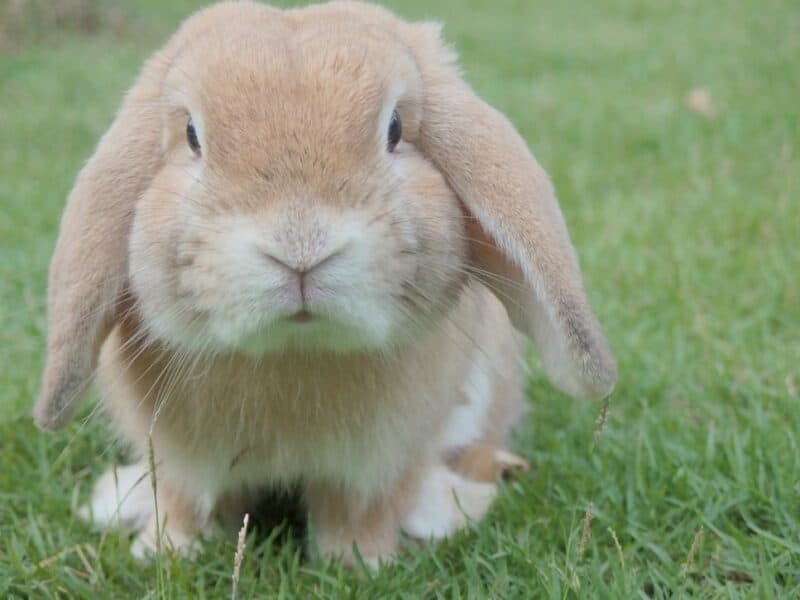
Fiber rabbits require lots of hay to keep their bowels healthy. You can generally raise and feed your fiber rabbits in the same way you would feed other rabbit breeds, with one exception.
Fiber rabbits need extra fiber because they are often self-grooming. This can cause your rabbits to become “bound up.” The fiber helps keep the digestive system in good working order.
Pellets alone will not be enough – make sure you provide that extra hay! However, pellets will form a good base for your rabbits’ diet. Pellets are loaded with protein and will help your rabbits maintain their weight.
As with other types of rabbits, you can also feed fiber rabbits vegetable and fruit scraps, too. The average rabbit will need about 1100 calories per day or 7-ounces of food.
If you’re really concerned about digestive problems, you can also supplement with papaya tablets, which is said to reduce blockages.
Make sure you supply plenty of water, too. Use rabbit waterers with nozzles and zip tie them to the cage. You should only have to refill a couple of times per week.
3. Breeding Fiber Rabbits
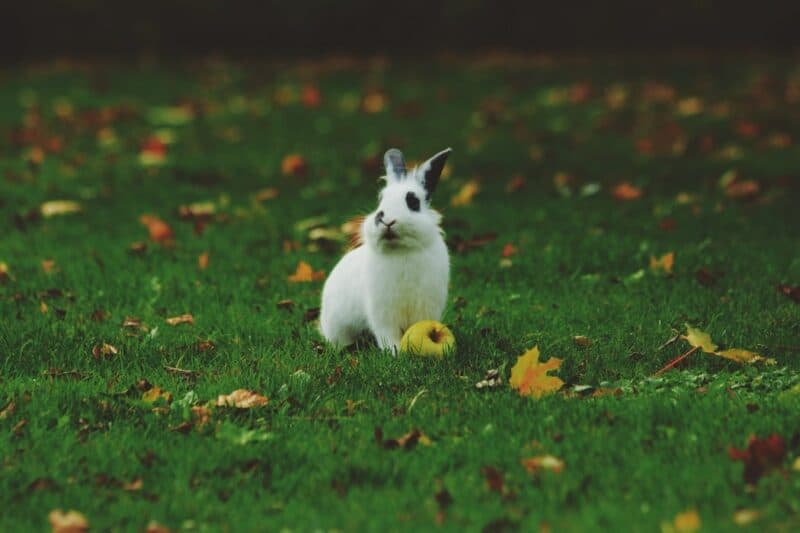
Fiber rabbits can be hard to find, particularly if you are raising a “rare” breed like a Satin Angora. You will pay up to $50 per rabbit. However, you may be able to find these rabbits for free on Craigslist simply because many people underestimate how much work goes into raising fiber rabbits.
That said, if you decide to breed fiber rabbits and have a good market in your area, you shouldn’t have a hard time selling them. Breeding fiber rabbits is a good idea if you want to maintain your own closed-loop of fiber rabbit producers, too.
Doe fiber rabbits should be bred before their first birthdays. Otherwise, their hip bones can fuse to become too narrow to let baby rabbits pass through. Try to breed your rabbit at about nine months old.
The best bucks for breeding will be those that have gentle dispositions and good fiber characteristics. Always put your doe into the buck’s space, and not vice versa. This may cause the doe to become too territorial. A rabbit’s gestation is only 30 days.
Mother rabbits will, for the most part, handle all baby rabbit care. You will need to provide your fiber rabbits with a nesting box, just like you would any other kind of rabbit.
Most mother rabbits will pluck out loosened hair in the days before birthing their rabbits and use their extra hair to make a nest.
4. Grooming Fiber Rabbits
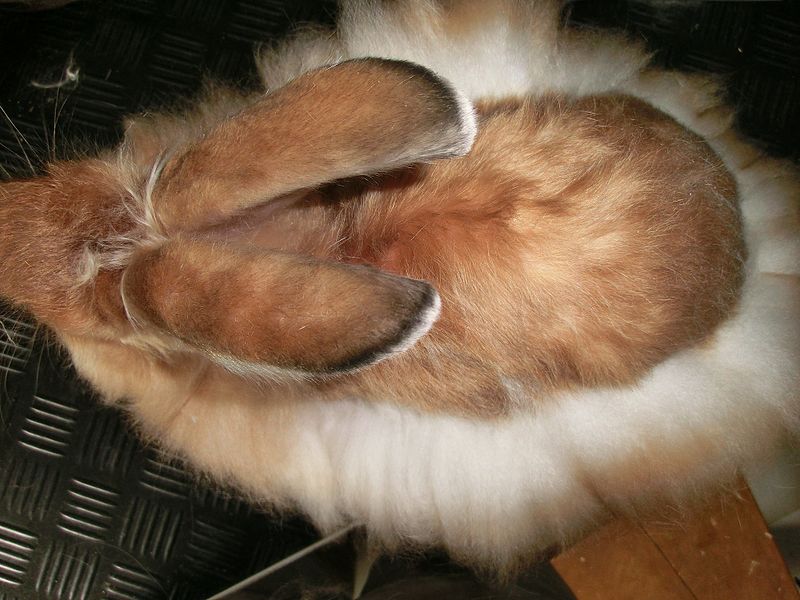
Grooming is the most time-consuming task when it comes to raising fiber rabbits. However, you will need to groom your rabbits on a weekly basis – perhaps more during molting periods. Often, you will need to groom up to four times per week when your rabbits are shedding!
How to groom your fiber rabbits will depend on your specific rabbit breed. Some rabbits will need to be brushed, while others are more self-sufficient.
If you are grooming Angora rabbits, for the most part, you will need to handle them for about 30 to 40 minutes apiece. This can be done once a week. You’ll get a lot of fluff per rabbit. All you need to do is comb your rabbits to remove the extra wool. Sometimes, you may have to pluck or shear.
Grooming should be done even when you aren’t planning on harvesting any wool.
If you aren’t up to the regular task of grooming, pick another breed.
5. Harvesting Wool
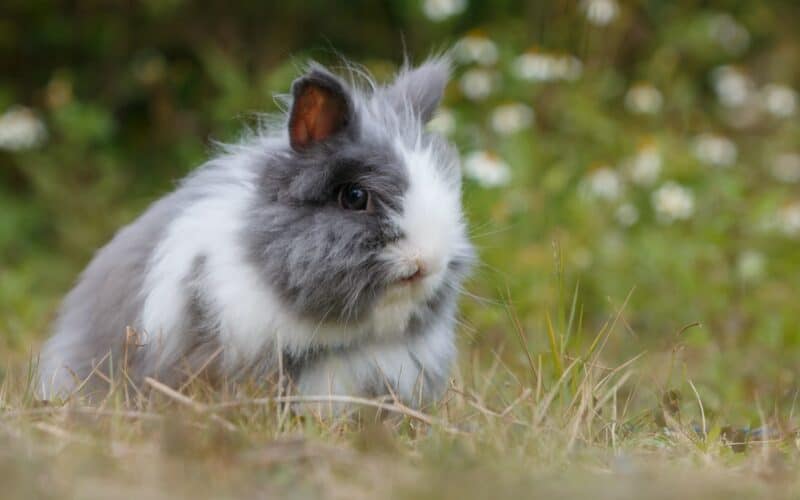
Harvesting wool will depend in part on what breed you have selected. Make sure you’ve done your research and understand whether your breed needs to be sheared or plucked.
It can be tough to shear your rabbit for the first time! They are nervous by nature and need to be trained by the clippers. The first few times can be rough, so you may want to have somebody who is trained in shearing and clipping rabbits show you what to do the first few go-arounds.
Here are some more tips on how to properly harvest wool from your rabbits.
Even if you don’t plan on using the fiber immediately, make sure you harvest wool every three months. Otherwise, the fur can become matted and your rabbits may develop itchy rashes.
If you have to pluck the rabbit instead of shear, you will have a somewhat easier time. The hair will naturally loosen and shed. If you have to pull, that means the fur is not yet ready for harvest. Otherwise, it should be easy for you to remove your fiber.
Rabbits that are meant to be plucked will actually enjoy the process. This is because, as you start to pluck, the rabbit’s body will begin to relax.
Final Tips for Raising Fiber Rabbits
When you are raising fiber rabbits, your success starts with choosing the right breed. This should be done in accordance with your plans for the fiber as well as how much time you have to devote to caring for and grooming your rabbits each week.
Make sure you pay attention to the unique grooming and dietary needs of your rabbits, too. Remember to harvest the wool – at least every three months – even if you don’t have a current use for it.
This way, your fiber rabbits will stay healthy and productive long into their lives.
